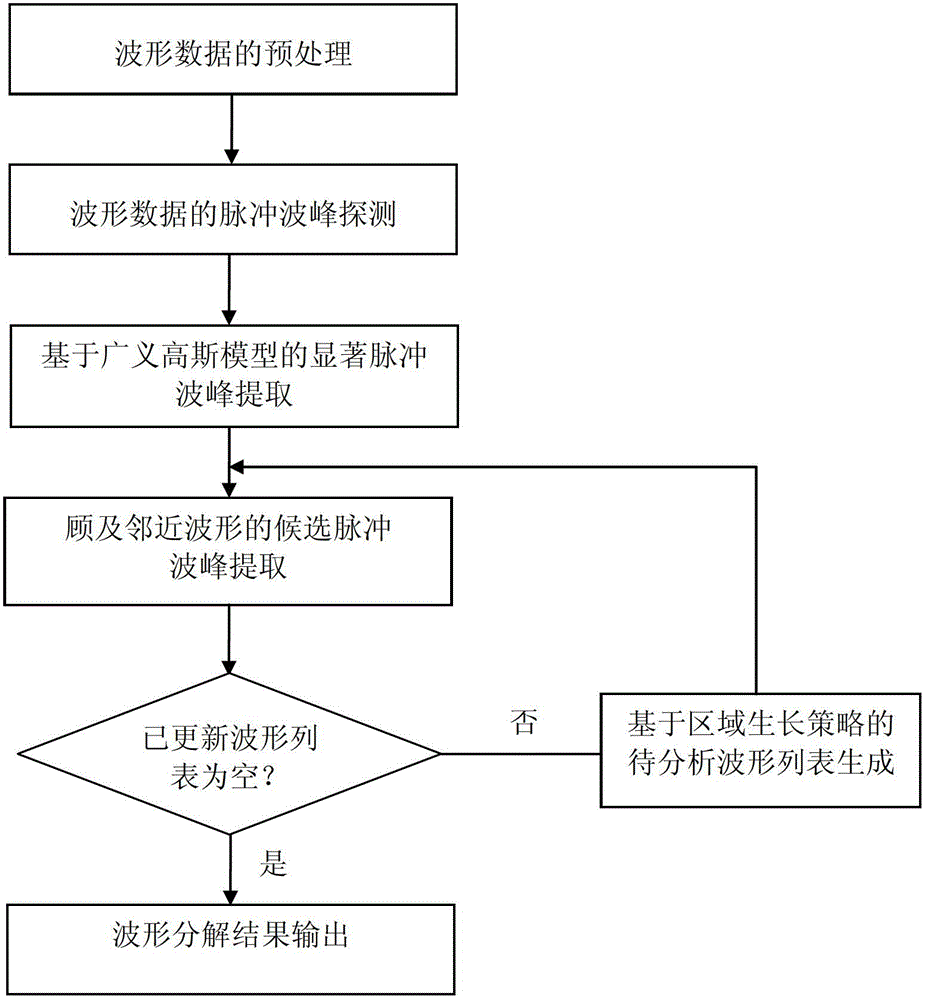Airborne laser waveform data decomposition algorithm considering adjacent waveform information
A waveform data, airborne laser technology, applied in the field of surveying and mapping science, can solve problems such as inability to detect, cannot be considered, and weak reflected pulse signals from ground points, achieving robust extraction and remarkable results.
- Summary
- Abstract
- Description
- Claims
- Application Information
AI Technical Summary
Problems solved by technology
Method used
Image
Examples
Embodiment 1
[0048] Such as figure 1 , a method for decomposing airborne laser waveform data taking into account adjacent waveform information, comprising the following steps:
[0049]Step 1. Preprocessing of waveform data: use a one-dimensional Gaussian template to smooth the original waveform data; use a first-order differential operator to calculate the first-order derivative of the smoothed waveform data; calculate the approximation corresponding to each waveform data Square plane coordinates, and establish a k-d tree index based on the approximate object square plane coordinates;
[0050] Waveform data smoothing processing based on Gaussian template: using the one-dimensional Gaussian template commonly used in digital image processing, the digital form in the continuous case is as follows:
[0051] f ( x ) = 1 σ 2 π ...
PUM
 Login to View More
Login to View More Abstract
Description
Claims
Application Information
 Login to View More
Login to View More - R&D
- Intellectual Property
- Life Sciences
- Materials
- Tech Scout
- Unparalleled Data Quality
- Higher Quality Content
- 60% Fewer Hallucinations
Browse by: Latest US Patents, China's latest patents, Technical Efficacy Thesaurus, Application Domain, Technology Topic, Popular Technical Reports.
© 2025 PatSnap. All rights reserved.Legal|Privacy policy|Modern Slavery Act Transparency Statement|Sitemap|About US| Contact US: help@patsnap.com



